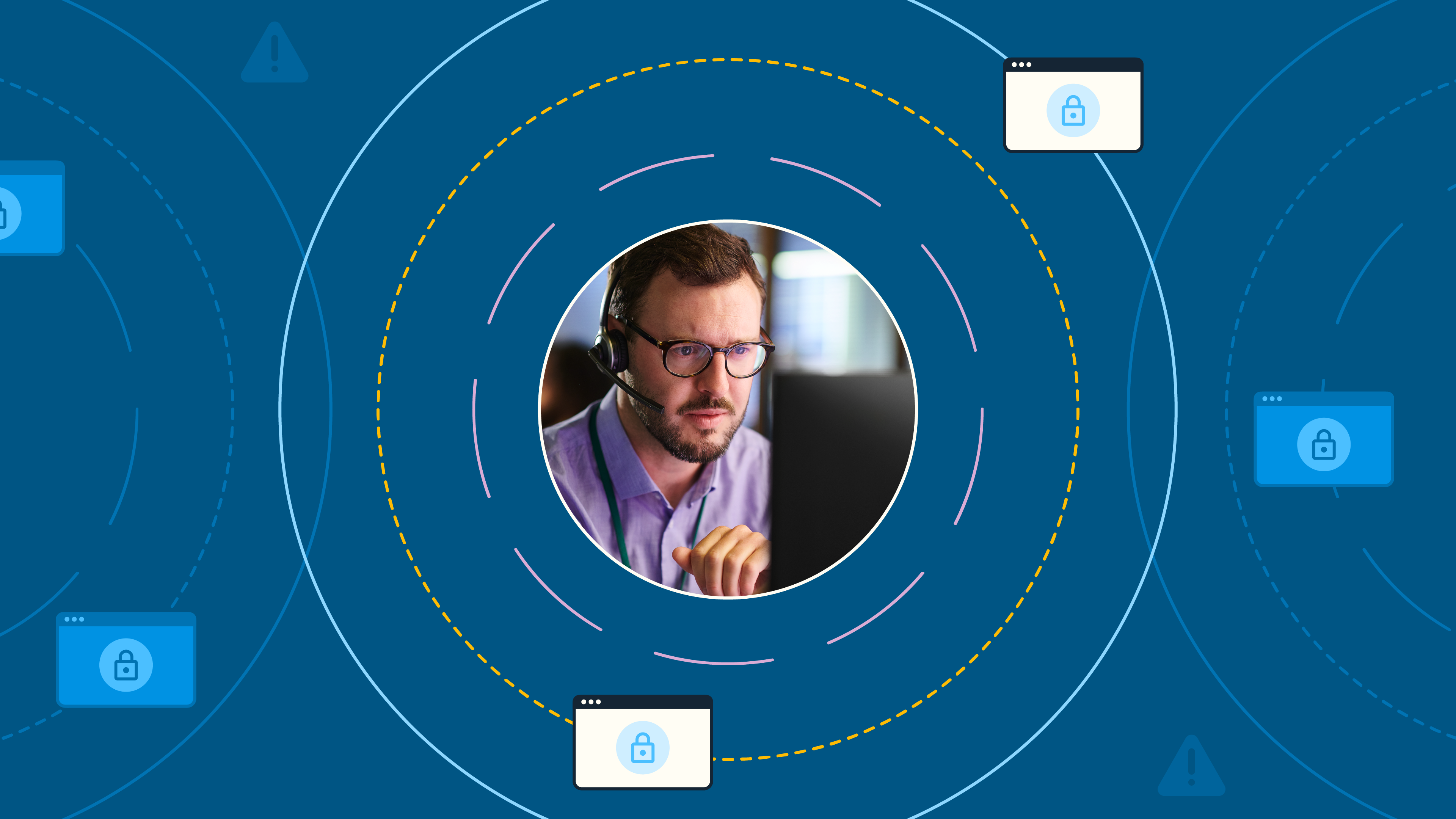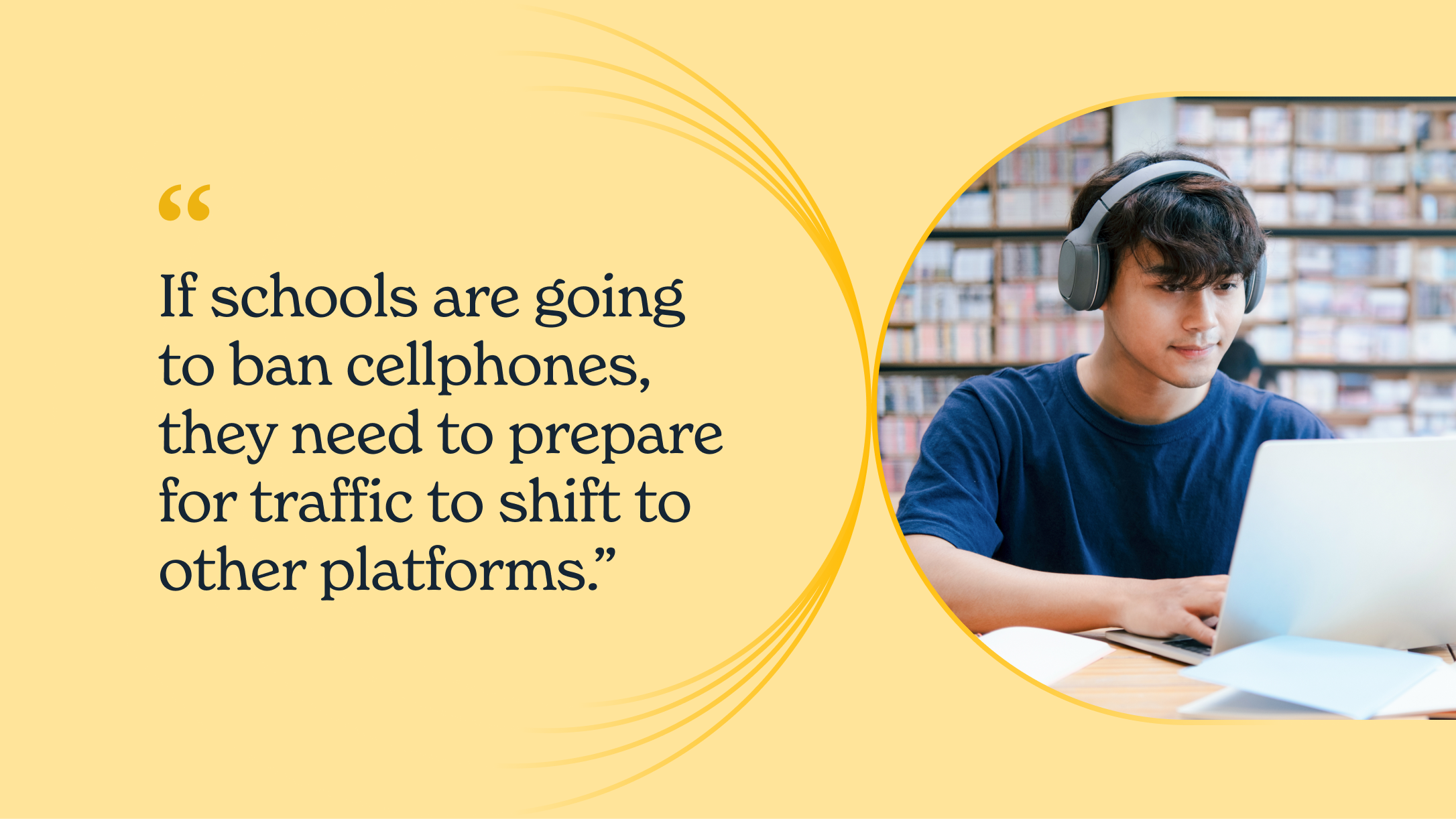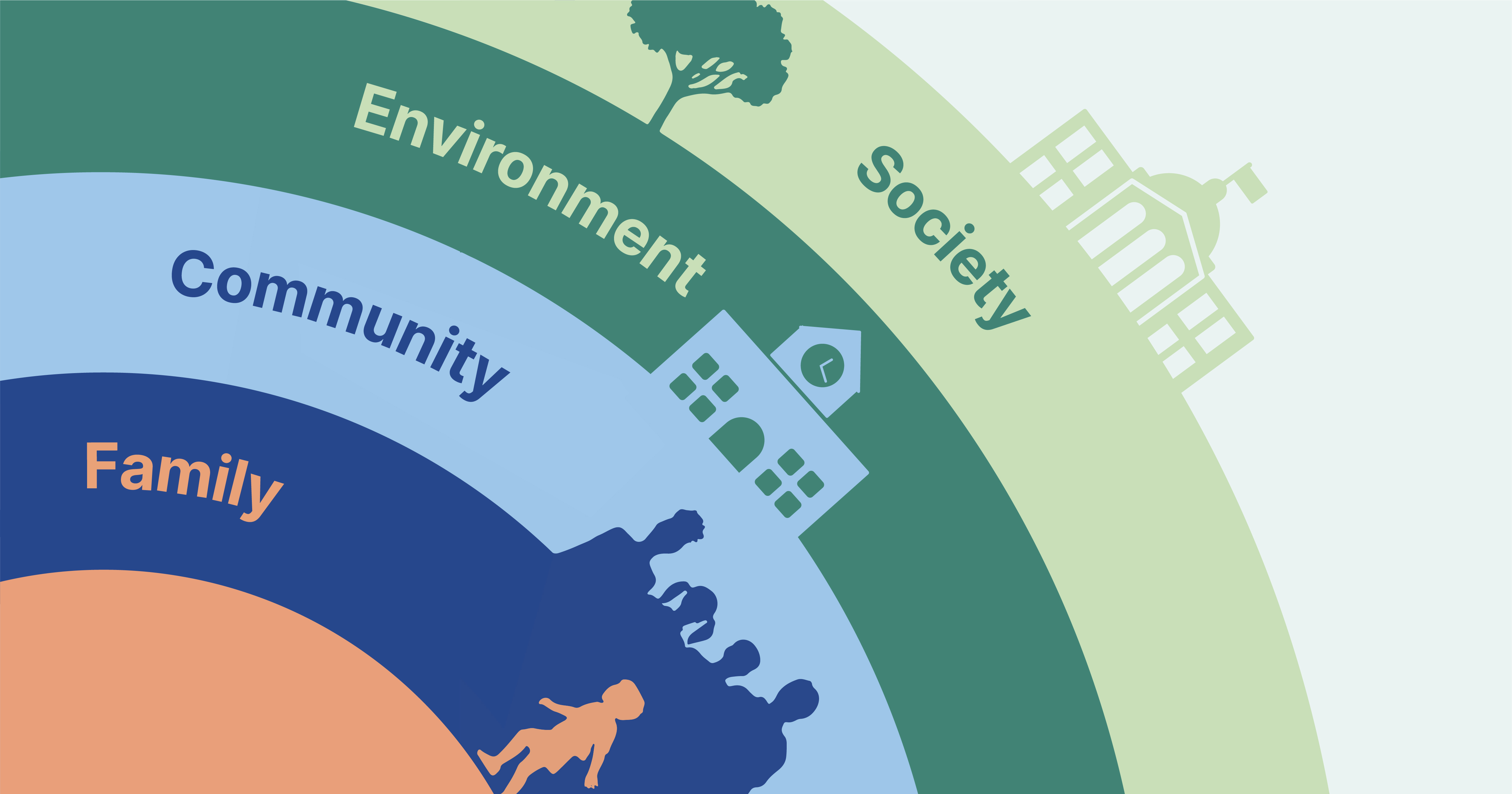
“The pandemic era’s unfathomable number of deaths, pervasive sense of fear, economic instability, and forced physical distancing from loved ones, friends, and communities have exacerbated the unprecedented stresses young people already faced,” said U.S. Surgeon General Vivek Murthy in a new advisory on youth mental health.
The advisory, released on December 7, 2021, underscores the rising prevalence of youth mental health challenges in the last decade — compounded by the unique challenges facing today’s generation of young people — and provides actionable recommendations for all community members to address it.
“Mental health challenges in children, adolescents, and young adults are real, and they are widespread. But most importantly, they are treatable, and often preventable. This Advisory shows us how.”
What does the Advisory tell us?
This in-depth report begins with a look at the factors that impact mental health and the increase of mental health challenges in young people even before the COVID-19 pandemic.
Prior to the pandemic, the Advisory reports that 1 in 5 children ages 3-17 had a mental, emotional, developmental, or behavioral disorder.¹
In the decade before the pandemic:
- High school students who reported persistent feelings of sadness or hopelessness increased by 40%.²
- Suicidal behaviors among high school students increased by 36%.²
- The number of high school students who made a suicide plan increased 44%.²
- Suicide rates among youth ages 10-24 increased by 57%.³
Perhaps the most concerning are the increase in numbers during the pandemic, all of which happened in less than two years. Research found that depressive and anxiety symptoms doubled among global youth during the pandemic, with 25% experiencing depressive symptoms and 20% experiencing anxiety symptoms.⁴ In the United States in early 2021, emergency department visits for suspected suicide attempts increased by 51% for adolescent girls and 4% for adolescent boys,⁵ compared to the same time period two years prior.
A recent joint statement of declaration by AAP-AACAP-CHA echoes this problem: “The pandemic has intensified this crisis: across the country we have witnessed dramatic increases in Emergency Department visits for all mental health emergencies including suspected suicide attempts.”
Who is affected?
When looking at the factors that shape the mental health of young people, the Surgeon General’s Advisory underscores that the pandemic’s negative impacts disproportionately impacted those “who were vulnerable to begin with and widened disparities.”
The groups identified in the report as high risk for mental health challenges include youth of color, LGBTQIA+ youth, youth with disabilities, youth in immigrant households, and low-income youth, among others.
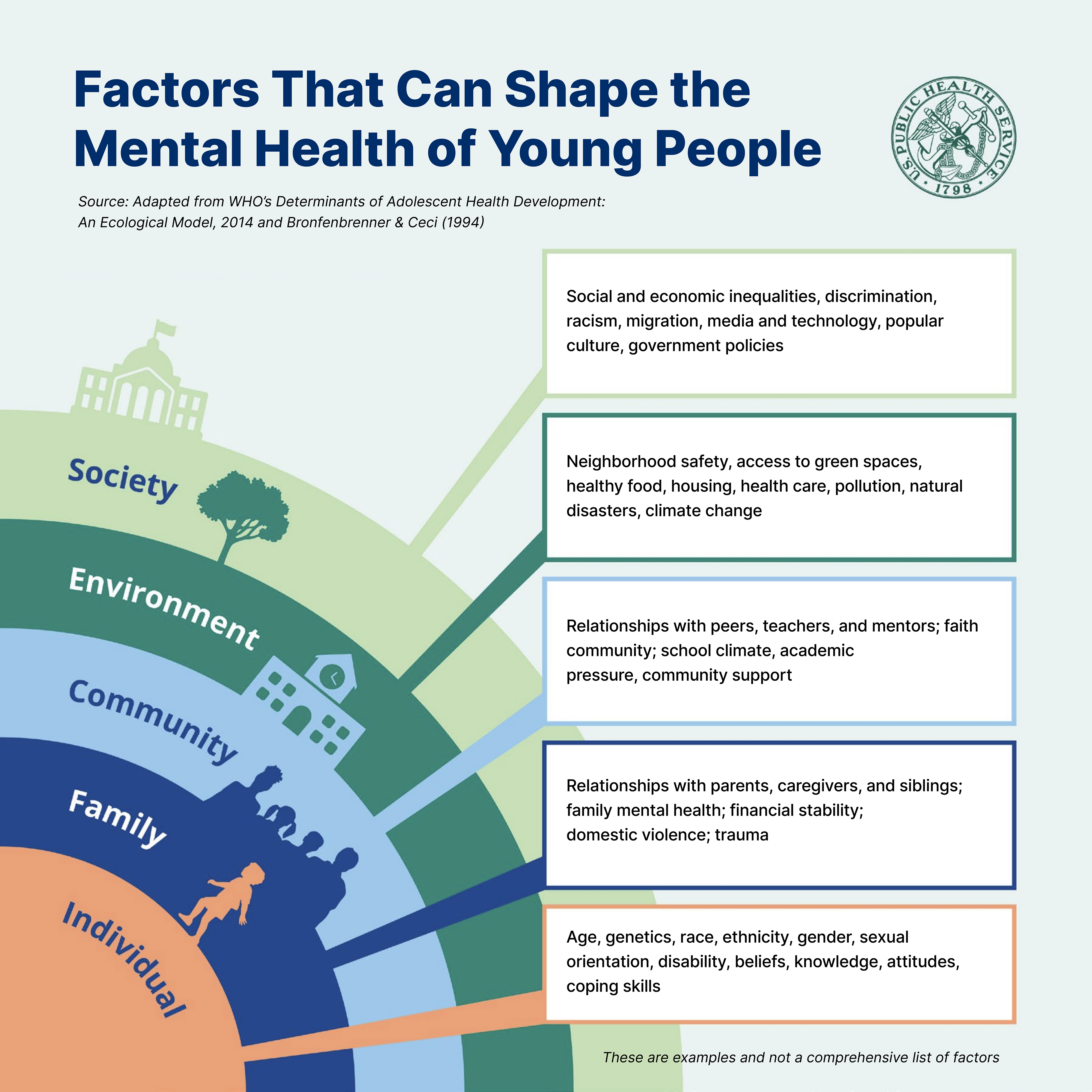
How can educators help?
With students spending a third of their time in school, school districts and staff are in a frontline position to identify students in need of support. The Surgeon General makes actionable recommendations on what individuals, communities, organizations, industries, and professionals can do.
For educators and schools, these recommendations include:
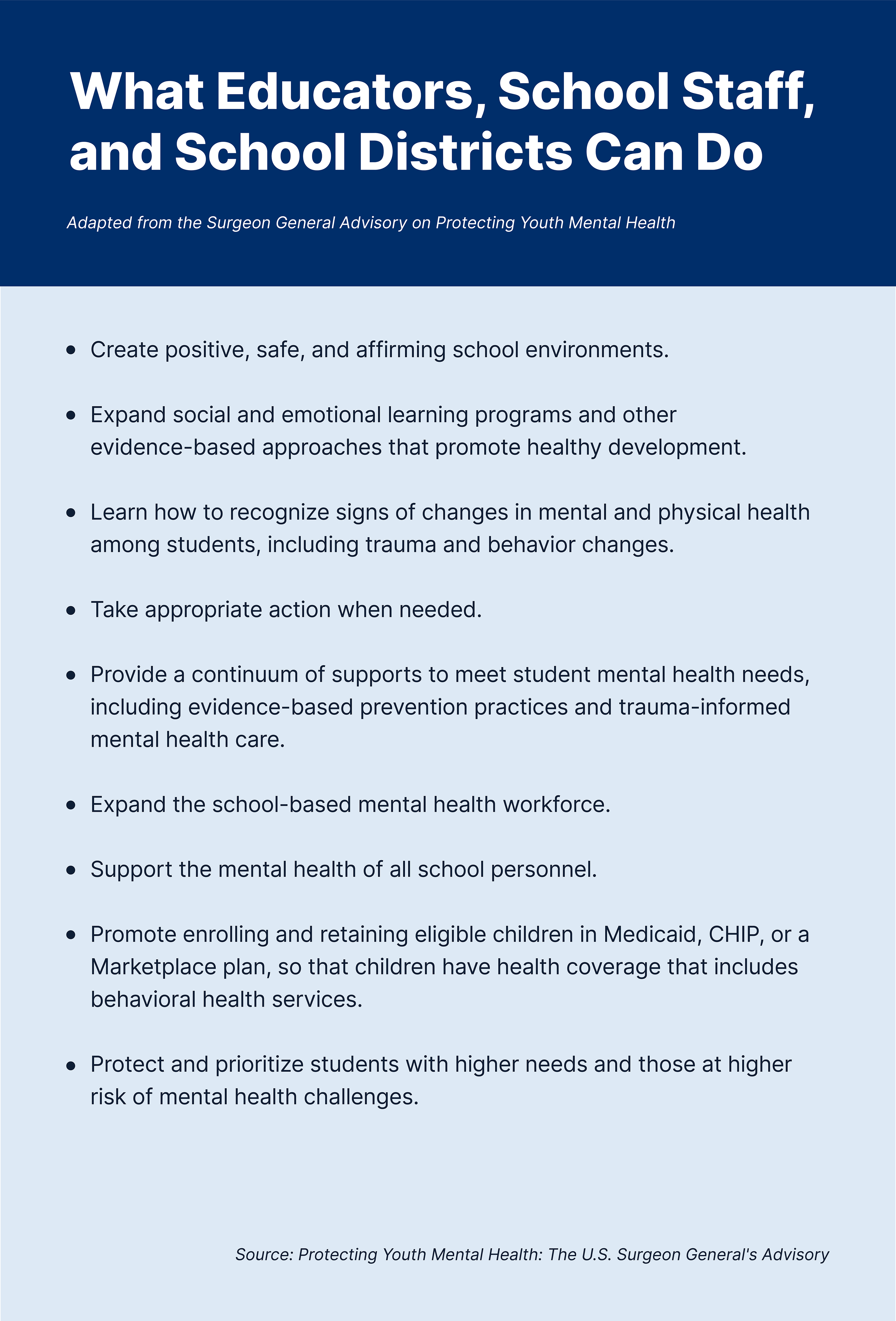
Also included in the recommendations are links to resources for educators, school staff, and school districts.
How can GoGuardian help?
Schools across the U.S. rely on GoGuardian Beacon as a critical part of a comprehensive program to support student mental health and safety. Designed with the guidance of mental health experts, Beacon can help your school identify students who are at risk of suicide, self-harm, or possible harm to others, and quickly activate the school’s response plan. To learn more, visit www.goguardian.com/beacon.
“If we seize this moment, step up for our children and their families in their moment of need, and lead with inclusion, kindness, and respect, we can lay the foundation for a healthier, more resilient, and more fulfilled nation.”
Find more resources for supporting student mental health at www.goguardian.com/suicide-self-harm-resources.
